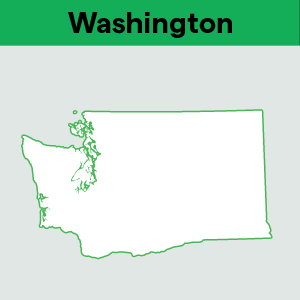How inflation and lower consumer spending can affect your business
by November 24, 2024
Macroeconomic trends like inflation and consumer spending have serious implications for growing businesses. This isn’t just because those trends affect your customers, but because state and local governments often take action in multiple ways as a result of projected budget shortfalls. Those actions often have profound effects on every company that does business in that state.
Let’s dive into why sales tax rates are influenced by inflation and lowered consumer spending – and the effects it may have on your business.
Sales tax plays an enormous role in the budget of most states
States rely on sales tax revenue to pay for public goods we may take for granted, including roads, hospitals and schools. According to a report from the Tax Foundation, “sales taxes account for 29.5 percent of all state tax revenue, second only to individual income taxes (40 percent) in their contribution to state receipts.”
In an inflationary environment, states can strangely benefit in the short run as prices rise and consumers have to spend more to make everyday purchases. “Inflation can provide a little bit of jolt to revenues,” says Carl Davis, the Research Director of the Institute on Taxation and Economic Policy.
A state might see their fiscal position decline due to the types of goods consumers are spending more money on. “More spending presumably means more taxable sales and therefore more sales tax revenue,” Davis says. “But one problem is that when you have high inflation in categories like motor fuel and groceries, those items are taking up a larger share of family’s budgets – and those products are not usually subject to sales tax. People have less money left over to spend on things that are typically taxed, like furniture or clothing.”
Predicting the future of sales tax rates
What will happen to state budgets if there’s a prolonged downturn? It’s too early to say. “We’re at a very important moment right now where the economic situation is changing incredibly quickly,” Davis says. “States are going to have to revisit their assumptions in the revenue estimates they put together.”
Davis says that lawmakers have a couple tools on hand to use in case those revenues do fall: dipping into a state’s rainy day fund, enacting spending cuts, or raising taxes (whether it’s income tax, sales tax, property tax, or a combination).
What happens to sales tax rates when there’s an economic downturn? “ Last time we had a major economic downturn in 2009, most states raised some type of tax,” he explains. “It was a mix of sales and income taxes, and various smaller levies like tobacco taxes or narrow kinds of business taxes.”
Sales tax isn’t the only way states increase revenue from businesses
Raising sales tax rates is one lever states can pull to try and increase revenue. And no matter the state of the macroeconomic environment, states are always auditing companies (brush up on the major reasons businesses get audited here). But when states are on the lookout for cash to fund everything from infrastructure projects to public universities, they sometimes get a bit creative.
“There’s a little bit of searching-the-couch-cushions approach where they’re grabbing little bits here and there,” Davis says. “[But last time there was a downturn], states introduced more tax amnesty programs. Instead of really aggressive auditing and enforcement, the states said, ‘Come forward now and we’ll cut you a break. We’d rather get something from you now at a relatively low effort from us, as opposed to putting out a lot more effort to enforce it without that amnesty incentive.’”
Modernizing the sales tax base means more goods and services will be taxable
The Tax Foundation stated in its latest report that “state sales tax bases are narrowing, forcing states to either raise rates or shift to other sources of tax revenue in response to this continuous erosion [in the sales tax base].” In addition, the think tank says that “these trends will continue until states undertake meaningful sales tax modernization.” But what does sales tax modernization mean? And how will it affect businesses?
While modernization is a broad term, states are always playing catch up with what products and services are deemed taxable. “It all comes down to the fact that the economy often evolves more quickly than state tax codes do,” Davis notes. “Digital downloads and streaming – those were exempt from sales tax not because lawmakers decided that they deserved to be tax exempt. They were exempt because those things didn’t exist at the time the sales tax statute was written.”
So how are states modernizing the tax code? “For a while, just collecting sales tax for sales made on the internet was thought of as a modernization,” Davis says. “So if you’re going to have a sales tax, it should apply to the way people spend their money today.” The way people are spending their money is shifting, as well – and what’s being taxed is changing, too.
Research shows that consumers have been spending more money on services over the years, transforming the U.S. from a manufacturing-based economy to a service-based one. “There’s a long-running trend of American consumers spending more of their money on services as opposed to goods,” Davis says. “States are less likely to tax services. Now there are exceptions, but as a general rule, they’re less likely to tax those. You need to tax the things people are buying now, so that expansion to services can be thought about as a modernization measure.”
If your business sells SaaS or other services, it’s important to keep in mind that if it’s not taxable today, it may be tomorrow. “With COVID fears easing, we’ve seen an uptick in spending on services,” David explains. “Whereas during lockdown people were buying physical goods and having them shipped to their house, the move towards service spending is happening in both the long-run and short-run. That can negatively impact sales tax revenues.”
If sales tax revenues are negatively impacted, state legislators might take action to make up for shortfalls in the state budget – and businesses would be wise to pay attention to what changes in the tax code.
The future of sales tax rates and product taxability
No one knows what effects an economic downturn might have on sales tax rates and the taxability of services, especially since every state finds itself in a different budgetary situation. But one thing is for certain – sales tax rates (and regulations) are always changing. It can be a full-time job just keeping track of these changes. When your business automates sales tax filing and remittance through TaxJar’s AutoFile, we track these changes on your behalf so you can focus on what’s important: growing your business.








